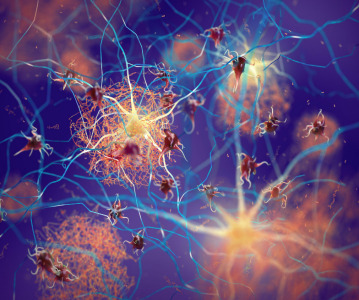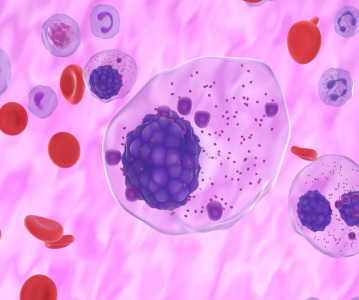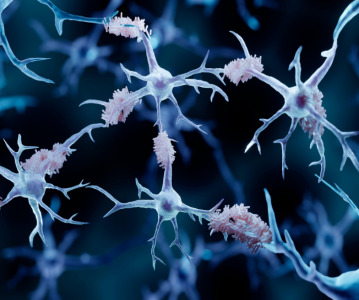NIH Researchers Identify Candidate Drug to Treat Batten Disease

Researchers at the National Institutes of Health have identified a potential new drug that could help in the treatment of a form of Batten disease, a fatal childhood disorder. The researchers tested the drug in mice with the disease and found that it slowed the loss of co-ordination seen in the disorder, and extended the animals’ life span.
The drug is derived from hydroxylamine, a molecule chemically similar to ammonia. Hyroxylamine is toxic, but a slight change in the molecule’s chemical structure results in a non-toxic molecule, called NtBuHA, short for N-(tert-Butyl-Hydroxylamine).
The term Batten disease refers to a group of disorders resulting in deterioration of the nervous system. These disorders occur in 1 of every 12,500 births, according to the study authors.
“The NIH researchers have found a promising lead for treating a devastating disease that has defied all attempts to treat it,” said Constantine A. Stratakis, MD, director of the Division of Intramural Research at the NIH’s Eunice Kennedy Shriver National Institute of Child Health and Human Development.
The researchers hope NtBuHA will be useful for treating a particular subtype of the disease, infantile Batten disease. With infantile Batten disease, children appear normal at birth, but experience a gradual, but steady, loss of brain tissue. By 11–18 months, they experience difficulty with physical coordination and begin to lose their vision. By age 4, they go blind and have no apparent brain activity. They may live in a vegetative state for several more years before dying.
Children with infantile Batten disease have a genetic deficiency of an enzyme, PPT1 (palmitoyl-protein thioesterase-1). Ordinarily PPT1 breaks down ceroid, a waxy substance. Without PPT1, ceroid builds up in brain cells, and results in infantile Batten disease. The researchers knew that the compound hydroxylaminemimics the function of the PPT1 enzyme. However, the compound is also toxic. After testing a panel of chemically modified hydroxylamines, they found that NtBuHA could mimic PPT1 in cultured cells from infantile Batten patients, preventing the waxy buildup, but without hyroxylamine’s toxic effects.
Next, the researchers tested NtBuHA on a strain of mice genetically modified to lack the PPT1 enzyme. They added NtBuHA to the animals’drinking water and found that it reached the animals’ brains, where it broke down and depleted the waxy deposits. Although NtBuHA did not prevent all of the damage that typically occurs in the mouse form of the disease, the waxy buildup was greatly reduced in the treated mice as compared to the untreated mice. The researchers found that NtBuHA protected the neurons in the animals’ brains, slowed the deterioration in motor co-ordination and extended the animals’ life span.
“We hope to test NtBuHA as a possible therapy for infantile Batten disease,” said senior author Anil B. Mukherjee, M.D., Ph.D., head of the Section on Developmental Genetics at the NICHD. The researchers are currently working to gain the approval required for testing such new drugs in clinical trials with patients.
Related News
-
News BioNTech to begin mRNA vaccine manufacturing in Rwanda by 2025
German biotechnology company BioNTech has stated their intentions to begin production at their mRNA vaccine factory in Rwanda by 2025, which will mark the first foreign mRNA vaccine manufacturing site on the continent of Africa. -
News Identifying Alzheimer’s Disease biomarker proteins with whole blood tests
A University of Manchester spin-out pharmaceutical company, PharmaKure, has reported successful study results for the quantification of Alzheimer’s Disease biomarker proteins with a whole blood test. -
News Bill & Melinda Gates Foundation to boost mRNA vaccine initiatives in Africa with USD $40m
To address vaccine inequality and accessibility issues, the Bill & Melinda Gates Foundation aims to deliver USD $40m to various biotech companies and vaccine manufacturers in support of mRNA vaccine development. -
News CPHI Podcast Series: Exploring neurological frontiers in Alzheimer's and beyond
The next episode of the CPHI Podcast Series delves into the science and background behind some recent developments in the field of Alzheimer's disease and neurological disorders. -
News Is patient centricity the future of pharmaceutical manufacturing?
In this interview with Sandra Sánchez y Oldenhage, President of PharmAdvice, she speaks to the importance of considering patients in the manufacturing stages of the pharmaceutical supply chain, and how it can redefine healthcare. -
News CPHI Podcast Series: How to leverage AI for Drug Discovery
Artificial intelligence is the topic of debate in the latest episode from the CPHI Podcast Series, where Digital Editor Lucy Chard speaks with Bill Whitford of DPS Group about the integration of AI in healthcare. -
News Pfizer forges ahead with blood cancer therapy after approval from FDA
Pfizer gains accelerated approval from the US FDA for their new bispecific antibody therapy for multiple myeloma, set to address an unmet need for patients. -
News Alzheimer's drug donanemab deemed effective in landmark clinical trial
Results from the TRAILBLAZER-ALZ 2 Randomised Clinical Trial into the use of donanemab to treat early symptoms of Alzheimer’s disease have been analysed.
Position your company at the heart of the global Pharma industry with a CPHI Online membership
-
Your products and solutions visible to thousands of visitors within the largest Pharma marketplace
-
Generate high-quality, engaged leads for your business, all year round
-
Promote your business as the industry’s thought-leader by hosting your reports, brochures and videos within your profile
-
Your company’s profile boosted at all participating CPHI events
-
An easy-to-use platform with a detailed dashboard showing your leads and performance







